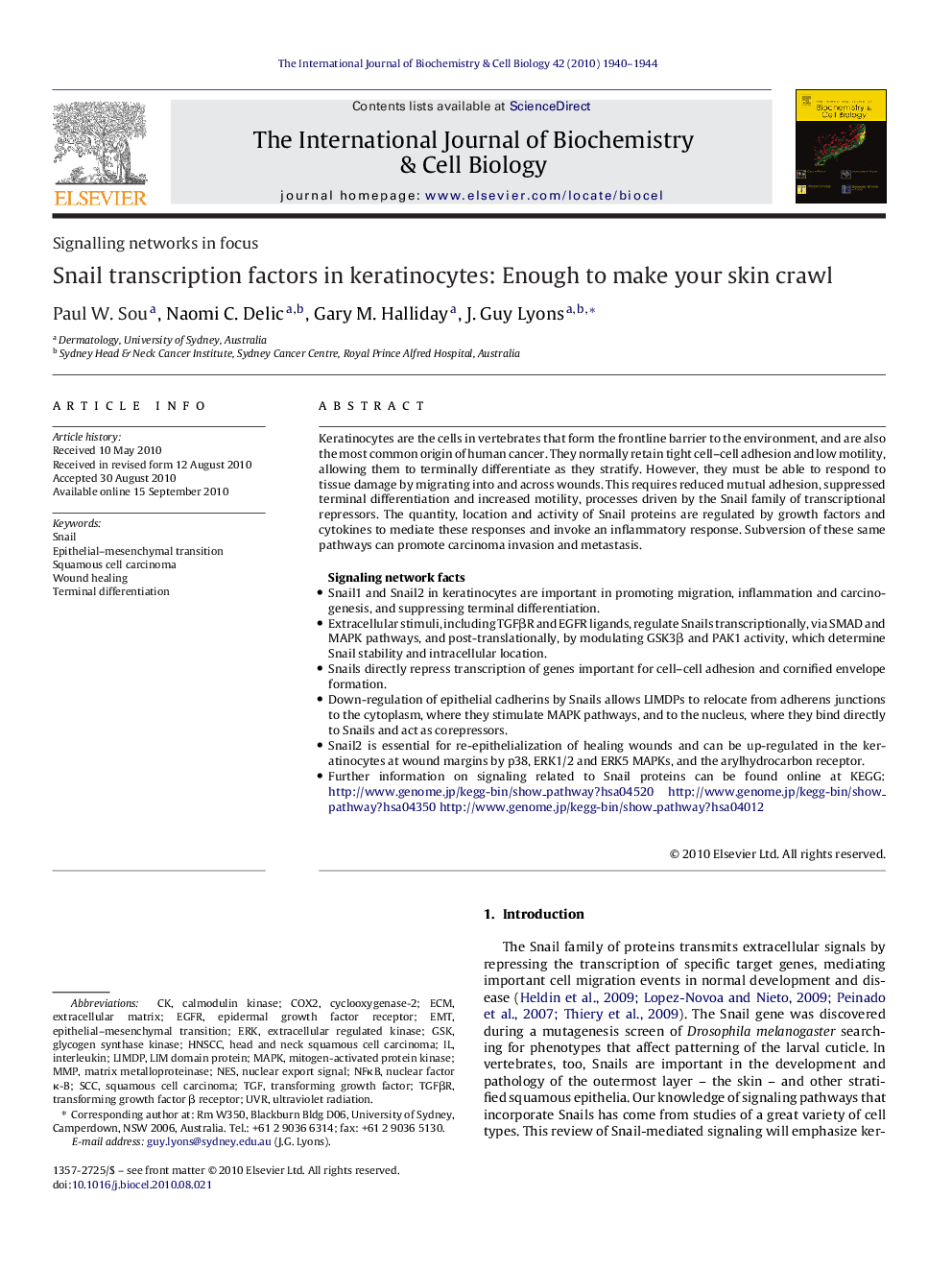| Article ID | Journal | Published Year | Pages | File Type |
|---|---|---|---|---|
| 1984234 | The International Journal of Biochemistry & Cell Biology | 2010 | 5 Pages |
Keratinocytes are the cells in vertebrates that form the frontline barrier to the environment, and are also the most common origin of human cancer. They normally retain tight cell–cell adhesion and low motility, allowing them to terminally differentiate as they stratify. However, they must be able to respond to tissue damage by migrating into and across wounds. This requires reduced mutual adhesion, suppressed terminal differentiation and increased motility, processes driven by the Snail family of transcriptional repressors. The quantity, location and activity of Snail proteins are regulated by growth factors and cytokines to mediate these responses and invoke an inflammatory response. Subversion of these same pathways can promote carcinoma invasion and metastasis.Signaling network facts•Snail1 and Snail2 in keratinocytes are important in promoting migration, inflammation and carcinogenesis, and suppressing terminal differentiation.•Extracellular stimuli, including TGFβR and EGFR ligands, regulate Snails transcriptionally, via SMAD and MAPK pathways, and post-translationally, by modulating GSK3β and PAK1 activity, which determine Snail stability and intracellular location.•Snails directly repress transcription of genes important for cell–cell adhesion and cornified envelope formation.•Down-regulation of epithelial cadherins by Snails allows LIMDPs to relocate from adherens junctions to the cytoplasm, where they stimulate MAPK pathways, and to the nucleus, where they bind directly to Snails and act as corepressors.•Snail2 is essential for re-epithelialization of healing wounds and can be up-regulated in the keratinocytes at wound margins by p38, ERK1/2 and ERK5 MAPKs, and the arylhydrocarbon receptor.•Further information on signaling related to Snail proteins can be found online at KEGG: http://www.genome.jp/kegg-bin/show_pathway?hsa04520http://www.genome.jp/kegg-bin/show_pathway?hsa04350http://www.genome.jp/kegg-bin/show_pathway?hsa04012
